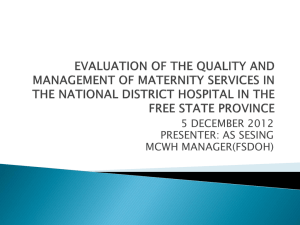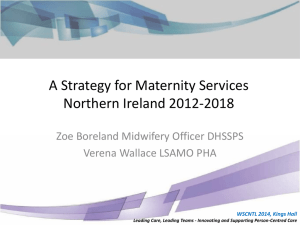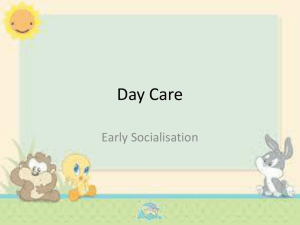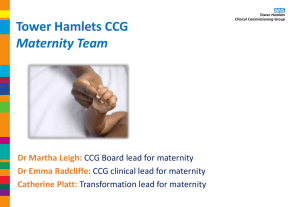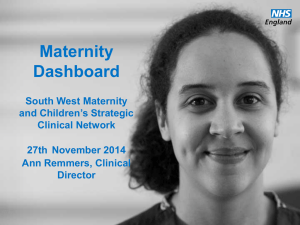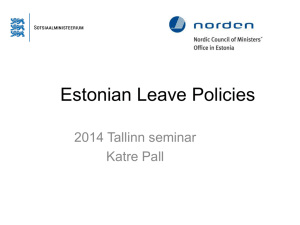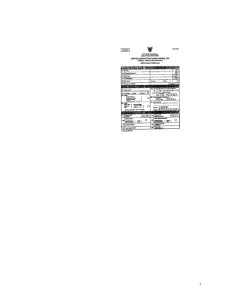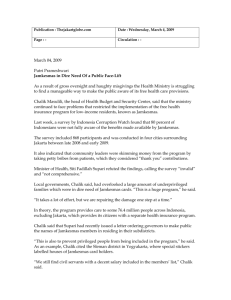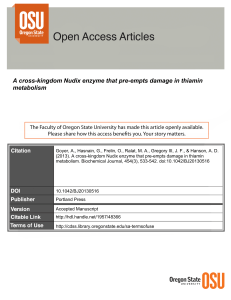Jampersal (Maternity Insurance)
advertisement
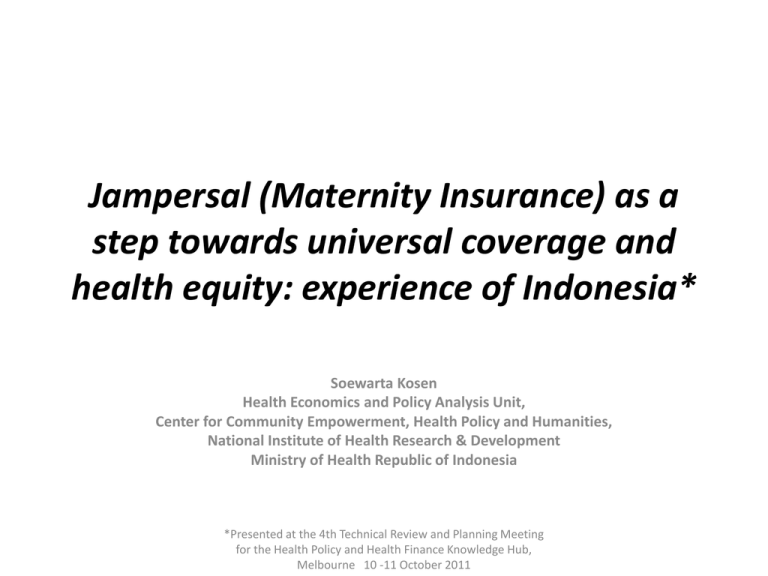
Jampersal (Maternity Insurance) as a step towards universal coverage and health equity: experience of Indonesia* Soewarta Kosen Health Economics and Policy Analysis Unit, Center for Community Empowerment, Health Policy and Humanities, National Institute of Health Research & Development Ministry of Health Republic of Indonesia *Presented at the 4th Technical Review and Planning Meeting for the Health Policy and Health Finance Knowledge Hub, Melbourne 10 -11 October 2011 BACKGROUND • Indonesian Constitution (1945) stated the right of every citizen to obtain health care • Indonesian Health Law (2009): right to obtain safe, accessible and quality health care • The government is responsible to provide quality health services • Social Security Law enacted since 2004, however the implementation is still fragmented COVERAGE OF HEALTH INSURANCE (2010) Distribusi Penduduk yang memiliki Jaminan Kesehatan (asuransi kesehatan) menurut Jenis Jaminan Proportion of Population with health insurance 5.61 12.45 3.33 20.83 43.98 57.78 Askes PNS&TNI POLRI Jamkesmas Asuransi Swasta & Lain 56.02 Jamsostek Jamkesda Local Health Insurance (JAMKESDA) exists in 250 districts/cities Tidak memiliki Jamkes 4 Provinces with Universal Coverage: South Sumatra, South Sulawesi, Bali, Nanggroe Aceh Darussalam Punya Jamkes HEALTH INITIATIVES • Health Insurance for the Poor (Jaminan Kesehatan Masyarakat / Jamkesmas) has been implemented since January 2005 for 76.4 million (the poor and the near poor) to cover free primary health care services including maternity care at community health center (Puskesmas) and in-patient services in hospital wards (third class). The Ministry of Health has managed the implementation since 2008, and directly distribute the fund to Puskesmas and hospitals • A universal maternity Benefit (Jaminan Persalinan/ Jampersal) is implemented since January 2011 for all pregnant women who are not covered by any maternity scheme. BACKGROUND • Health Insurance for the Poor (Jaminan Kesehatan Masyarakat / Jamkesmas) is delivered through 8.917 community health centers/ PUSKESMAS) and hospitals (public and private) • Maternity Insurance is delivered through physician and midwife practitioners, community health center/PUSKESMAS, maternity clinic and hospital • Fund is channelled from central to district/city through social assistance mechanism • Total budget for both programs in 2011: 6.3 Trillion Rupiahs (800 Million Au $) Seven Development Area of BAPPENAS, 2008 Wilayah Sumatera Share PDRB thdp Nasional Pertumb. Ekonomi 21,55% 4,65% Pendaptn perkapita 9,80 jt Penduduk miskin 7,3 jt (14,4%) Wilayah Kalimantan Share PDRB thdp Nasional Pertumb. Ekonomi Wilayah Sulawesi Share PDRB thdp Nasional Pertmbh Ekonomi 7.72% Pendapt perkapita 4,98 jt Pendudk miskin 2,61 jt (17,6%) 8,83% Wilayah Papua Share PDRB thdp Nasional Pertmbuh Ekonomi 1,28% 5.26% Pendaptn perkapita 8,96 jt Pendaptn perkapita 13,99 jt Pendudk miskin 1,21 jt (9%) Pndudk miskin Wilayah Jawa Bali Share PDRB thdp Nasional Pertumbh Ekonomi 4,60% 0,60% 0,98 jt (36,1%) 62,00% 5.89% Pendapt perkapita 11,27 jt Pendudk miskin 20,19 jt (12,5%) Source : Statistics Ind. 2008 Note: based on constant prices Wilayah Nusa Tenggara Share PDRB thdp Nasional 1,42% Pertmbuh Ekonomi 3,50% Pendapt perkapita 3,18 jt Pendudk miskin 2,17 jt (24,8%) Wilayah Maluku Share PDRB thdp Nasional Pertumbh Ekonomi 0,32% 4,94% Pendaptn perkapita 2,81 jt Pendudk miskin 0,49 jt (20,5%) 6 REASONS TO IMPLEMENT JAMPERSAL • • • • • High maternal, neonatal and infant mortality rates Coverage of deliveries in health care facilities: 55.4 % Decrease Contraceptive Prevalence Rate Problems of geographical and financial access Need to focus on delivery period and immediate postdelivery period (90 % of complications) that include: – – – – Post delivery bleeding (28 %) Toxaemia (24 %) Infection (11 %) Puerperal complication (11 %) Neonatal mortality by Island group, Indonesia, 1990 - 2015 Neonatal Mortality by Wealth Group 0 INDONESIA 35 Irian Jaya Barat 41 41 Papua 52 Maluku Utara 60 Maluku 72 Sulawesi Barat Gorontalo Sulawesi Tenggara 58 Sulawesi Selatan 70 Sulawesi Tengah 26 30 Kalimantan Timur Sulawesi Utara 57 Kalimantan Selatan 34 Kalimantan Tengah 46 Kalimantan Barat 60 Nusa Tenggara Timur 80 Nusa Tenggara Barat 35 Bali Banten 39 Jawa Timur 28 D.I. Yogyakarta 43 Jawa Tengah 30 25 DKI Jakarta Jawa Barat 39 Kepulauan Riau 43 Bangka Belitung 42 46 Lampung 37 39 Bengkulu 46 47 Sumatera Selatan Jambi 40 Riau Sumatera Barat 50 Sumatera Utara NAD Per 1.000 Kelahiran Hidup Infant Mortality Rate decreases from 35 to 34 per 1000 live births, with disparity among provinces Angka Kematian Bayi (Per 1.000 Kelahiran Hidup) Per Provinsi Tahun 2007 Angka Nasional 34 74 59 46 51 41 36 34 26 20 19 10 Source: DHS 2007 MDG target for IMR: 23 per 1,000 live births by 2015 10 Maternal Mortality Rate, Indonesia 1994 - 2007 450 Angka Kematian Ibu 400 390 Sasaran RPJM 350 AKI Per 100.000 KH 334 307 300 250 228 226 200 150 MDG Target 100 102 50 0 1994 1997 2002 2007 2009 2015 Tahun Source: DHS 11 Infant Mortality Rate by quintile of income 60 56 Disparity by quintile of income 47 50 40 33 29 30 26 20 10 Malnutrition among children under fives by quintile of income 0 Q1 Q2 Q3 Q4 Q5 Sumber data : SDKI 2007 25 22.1 19.5 20 18.1 16.5 13.7 15 10 5 0 Kuintil 1 Kuintil 2 Kuintil 3 Kuintil 4 Kuintil 5 Kekurangan Gizi Sumber data : Susenas, 2007 12 Equity Index 1.67 94.8 57.9 Proportion of Safe Delivery (attended by trained health personnel) by expenditure Quintile (Susenas 2006) Objectives of Maternity Insurance • To increase coverage of prenatal care, delivery attendance and puerperal care by trained health personnel • To increase coverage of neonatal care by trained personnel • To increase coverage of post-delivery family planning services • To increase coverage of complication management for mothers and babies FACILITIES FOR MATERNITY INSURANCE Contracted facilities (public and private) in all over Indonesia Facilities for normal pregnant women, delivery and puerperal period: * Community Health Center (Puskesmas) with or without in-patient facilities * Village Maternity Hut (Polindes * General Practitioner * Midwife Practitioner * Private Maternity Clinic •Facilities for emergency obstetric & neonatal management or complications: * Puskesmas with basic obstetric-neonatal emergency facilities * Hospitals 15 Availability of referral facilities (public hospital and private hospital) for JamKesMas/Health Insurance for the poor, 2008 - 2010 Faskes Jamkesmas RS Pemerintah 1200 1012 954 1000 RS Swasta 855 800 665 650 582 600 400 337 304 273 200 0 2008 2009 2010 DISCUSSIONS • The Health Insurance for the poor is estimated utilized only 40 millions out of 76.4 millions of poor people • Under utilization showed by areas outside Jawa, Bali and Sumatra • Main obstacles: poor geographical access & transport facilities and limited availability of health facilities (qualified personnel, drugs, equipment , physical infrastructure) • Need special efforts to fix the situation, to achieve objectives of Maternity Insurance CONCLUSIONS • Universal coverage of Maternity Insurance as well as future social health insurance will be less effective with identified obstacles • The government should solve several “bottleneck” that include: – hiring and placement of physicians in remote and poor area – Increase quality and distribution of midwives – Improve availability and distribution of quality health care facilities at primary and referral level – Improve availability and distribution of blood banks – Improve availability and distribution of Ob-Gyn and Paediatricians in referral facilities
